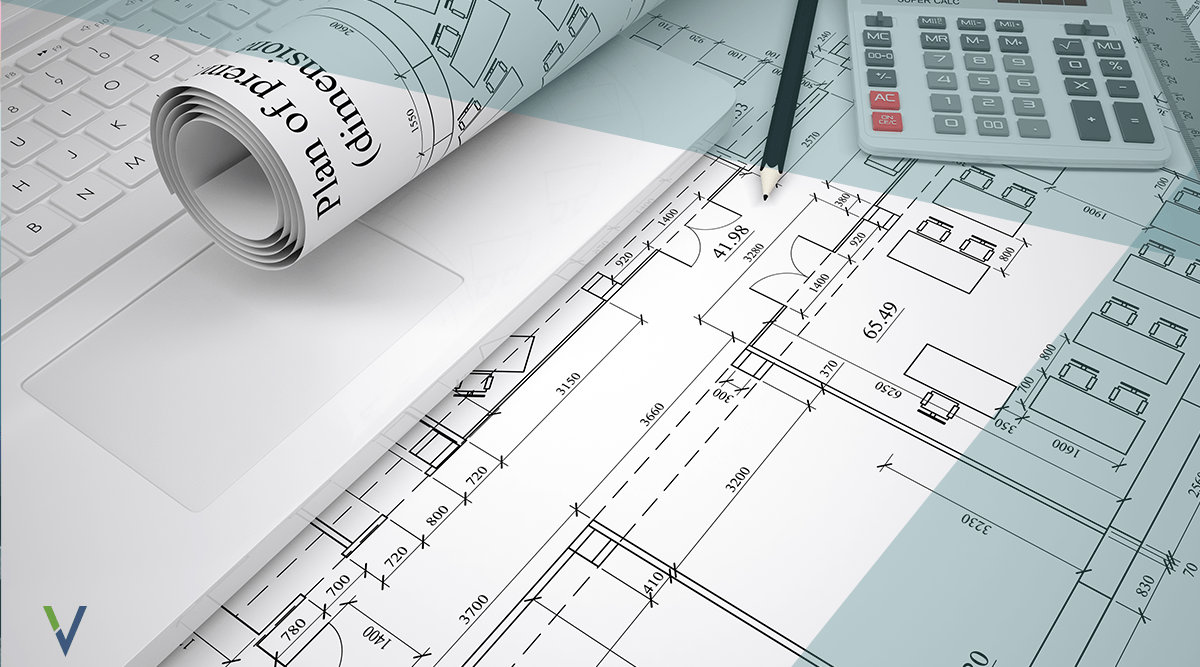Recent Blogs
- Market Outlook Fed Watch Part 2
- Market Outlook Fed Watch
- The Bipartisan Infrastructure Plan and Construction Costs
- Steel Industry Volatility, Risks & Risk Mitigation
- Total Benefit - HVAC
- The Ins and Outs of Insulated Concrete Forms
- Mini Construction Market Update
- Where Did All the Wood Go
- How Do You Price an Elephant
- What if This is the Recession?
I am now entering my fifteenth year of Construction Cost Estimating with Vermeulens. Over the years my team and I have overcome numerous cost and budget challenges.
The most common theme is a project budget that is set inaccurately by trying to use dollar per square foot ($/sf) estimates and benchmarks. We understand there needs to be a starting point but is there a better way? I will give you the conclusion right up front:
“Detailed cost models during the conceptual design stage, preferably before a $/sf budget is set. “
Sitework & Utilities
Sitework and Utilities are the largest and most common miss on $/sf and benchmarking studies for several reasons. Site development costs are often driven by the amount of developed area and the proximity to adjacent utilities. These costs are somewhat disconnected from the program or size of building on a site. Let’s say for example, you have a 5 acre site with required sitework and utility scope of $2.5M ($500K/acre). If you build a 50,000sf building on this site, the cost/sf is $50/sf amortized over the building area. If you double the size of the building to 100,000sf, the same scope is now only $25/sf. Although the building has grown, the site development costs change very little. They may actually decrease as the footprint of the building takes up more of the site.
The Answer: Detailed cost models during the conceptual design stage.
Exterior Spaces – Stairs/Walkways, Breezeways, Penthouses
In my primary territory of the South/Southwest; breezeways, exterior stairs, and open-air penthouses are sometimes desired and are good design practice. However, this can have a major impact on the $/sf of a building. For example, you have a 100,000sf building which includes an enclosed 10,000sf penthouse as part of the GFA. If the team converts the penthouse to open air, the building gross will drop from 100,000sf to 90,000sf. The overall costs will decrease, but only marginally. You will add money to weatherproof your MEP equipment and the exterior walls will not change substantially as you usually build a cantilevered screen wall in its place. All you really save is; sprinklers, lighting, ventilation and usually a low cost roof structure (not roof cover). Perhaps a savings of $30/sf to $50/sf depending on which region you are in. So let’s say this building originally cost $300/sf over 100,000sf which is $30M. You remove the penthouse and save $50/sf x 10,000gsf which is $500K. Now you have a $29.5M building but only 90,000gsf which equates to $328/sf. Although you reduced the cost of the project, the $/sf has increased by close to 10% ($328/sf vs 300/sf). The same metrics apply to exterior stairs, walkways and breezeways.
The Answer: Detailed cost models during the conceptual design stage.
MEP Densities
Not all building types of like program are designed and built the same way. Let’s take a typical office space for example. Your typical office is 100sf and has individual air control. The cost of controlling the air in that office is likely $5K or more (box, pipe, controls, power), that is $50/sf. If you decide to gang four offices together the cost will drop to $12.5/sf. Similarly, three offices together would be $17/sf. This same example applies to numerous mechanical, electrical and plumbing (MEP) systems across all building types. When you are planning MEP intensive facilities like hospitals and laboratories this becomes an even larger issue.
The Answer: Detailed cost models during the conceptual design stage.
Program Densities
Let’s take the same example above of an office. However, let’s shrink the office from 100sf to 80sf. What do you save? Flooring, ceiling, slab structure and a small amount of drywall and paint. The controls, plumbing, fire protection, elevators, electrical service, lighting, branch power, data, windows, doors all remain the same. So shrinking an office will save you money but it only saves you perhaps $70/sf - $100/sf or less. Not the $300/sf the building maybe costing. Program ‘shrinking’ will drive up the overall cost/sf but will decrease overall first cost.
The Answer: Detailed cost models during the conceptual design stage.
Building Enclosure (Skin) Ratios – Overhangs, Soffits & Sunshades
If you compare a large square building to long skinny bar building you will quickly discover that the amount of skin required to enclose this building is drastically different. We have seen skin/floor ratios that range from 0.4 skin/floor, up to 1.2 skin/floor. At a rate of $50/sf for exterior skin (conservative), that equates to a range of $20/sf to $60/sf (gross) for the skin of a building; 300% range. Without a conceptual layout of the program and massing it is very difficult to predict the $/sf required to enclose the building.
The Answer: Detailed cost models during the conceptual design stage.
Other Common Issues
- Schedule Duration – General Conditions are generally driven by a dollar per month metric, not by a building size or percentage of construction costs. Often times phasing and project specific requirements can generate general conditions that range from 3% of construction up to 25% of direct construction costs.
- Escalation – Using historical data is a challenge due to fluctuations in market activity. Although construction costs trend to a long term average escalation of 3%-4%, it is important to know where you are benchmarking from. For example, in the last recession we actually had negative and flat years. If using a project from that time you can very easily miss the mark by 10%-15%.
- Location – Every market is different. Unions, cost of living, workforce make-up and productivity all impact the cost of a project. Building a lab in Boston is not the same as Austin. The delta could be up to 40% depending on the project type and size.
- Procurement Type – Hard bid projects and at Construction Manager at risk negotiated projects (CMAR or Guaranteed Maximum Price) generally have a difference on first costs. Due to variations in staffing, risk transfer, buy-out contingency and trade selection the first costs can vary by close to 15%.
Conclusion
Every project is unique, particularly when you are working on custom institutional work. In order to accurately match a program and budget you need to develop a detailed line item cost model that addresses all items above and more. In a perfect world; the program, conceptual design and systems narratives would be completed and priced before a budget is set. If this is not possible, as is typically the case, use ranges for program area and costs until a systems based model can be created. For example: $360/sf to $440/sf in lieu of $400/sf or 90,000sf to 110,000sf in lieu of 100,000sf.
Blair Tennant
Principal
Blair has been in the industry for over 2 decades. He has worked on
some of the company’s most complex and largest projects.












